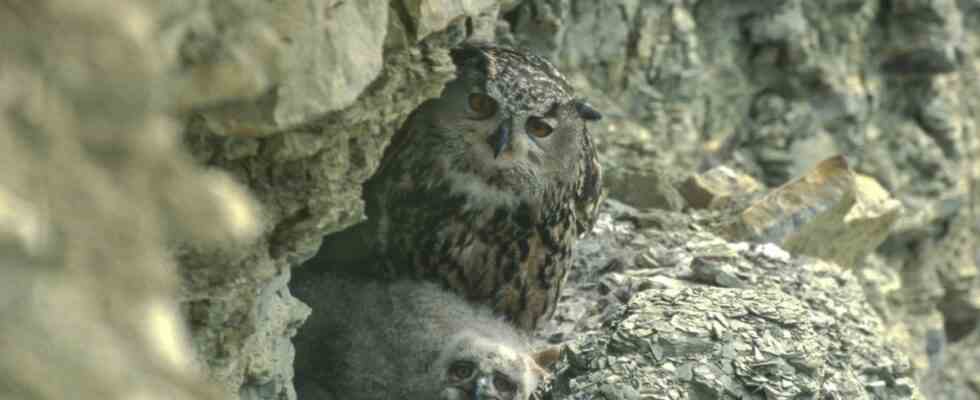In Franconian Switzerland, but also elsewhere in Bavaria, you can usually hear the hoarse, croaking begging calls of young eagle owls in the summertime. This year is different. The calls are missing in many places. The eagle owls have obviously had hardly any offspring. Torben Langer from the State Association for the Protection of Birds (LBV) and his helpers observed almost 70 courting eagle owls in Franconian Switzerland alone in February. But very few of them have bred successfully. Between Main and Pegnitz, the LBV people discovered only eleven young owls. Langer suspects that the reason for the poor breeding success is that there were comparatively few mice and other prey for the owl species this year. In 2021, they met almost six times as many young eagle owls in Franconian Switzerland.
The eagle owl, or bubo bubo as its scientific name is, is the largest species of owl. It is distributed in Asia, Europe and North Africa. The birds of prey have a massive body, a conspicuously thick head with feather ears and orange-yellow eyes, their plumage has dark longitudinal and transverse markings. Owls are found in many places in Bavaria – according to the State Office for the Environment, especially in the Franconian Jura and in Mainfranken, but also on the middle reaches of the larger rivers. In the Fichtelgebirge, but also in the Upper Palatinate and in the Bavarian Forest, eagle owls are rarely found. The only important thing for the eagle owls is that they find a rock face, a rock niche or a rock band for their clutch. They also often inhabit quarries. In the 1960s, the eagle owls were almost extinct in Bavaria. The fact that there are now more than 500 breeding pairs nationwide is also due to the extensive species aid program that the Free State is affording for the eagle owls.
As with many other bird species, the breeding success of the eagle owl is closely linked to the food supply for them. “If the big owls don’t find enough to eat, they stop breeding prematurely or don’t start at all,” says Langer. But you don’t have to worry about the owls just yet. “It is part of the fact that there is always a bad mouse year,” says Langer. “Next year it could look completely different again.”
The last bad Uhu year in Bavaria was 2018. “The following year, however, the situation normalized again,” Langer recalls. Many eagle owls are already preparing for the next breeding season during these weeks. “They are already courting and marking their territories for next spring,” says Langer. That’s why it’s not uncommon to hear the characteristic owl calls far and wide in the evening.

